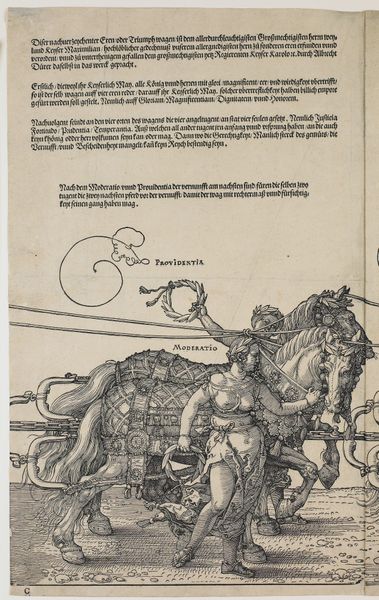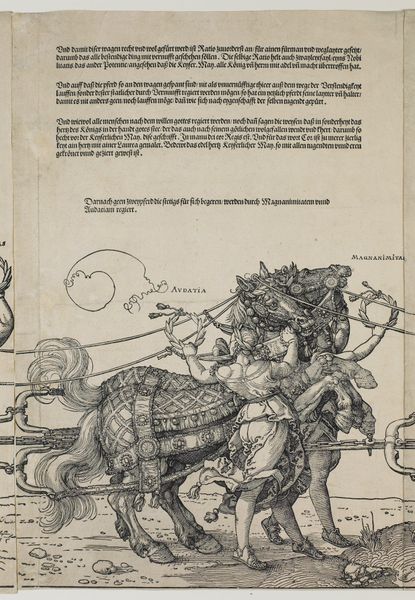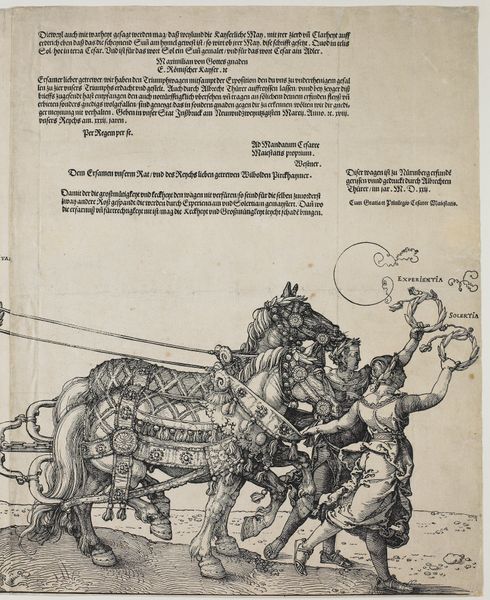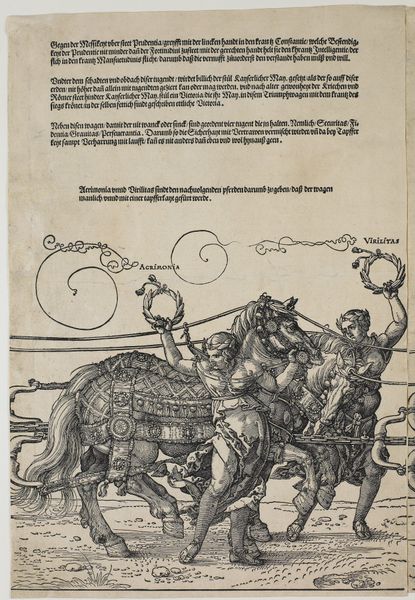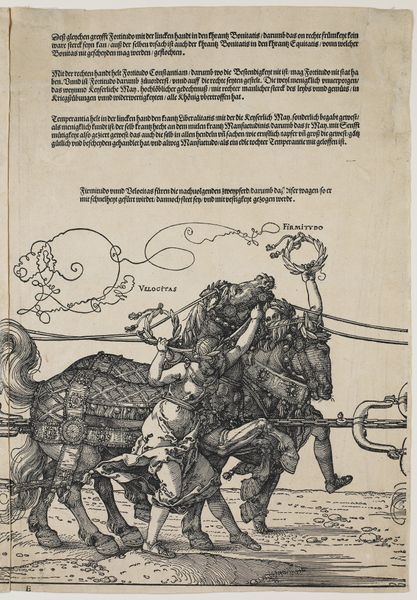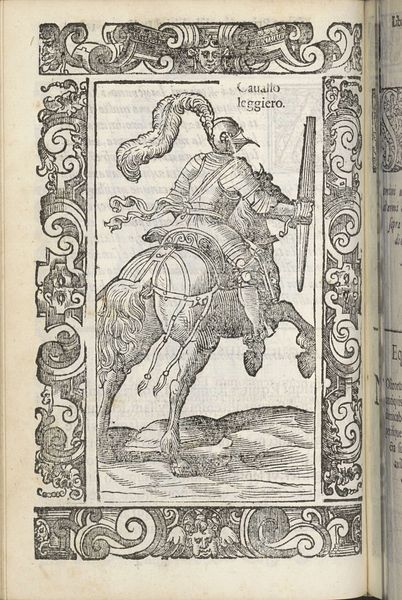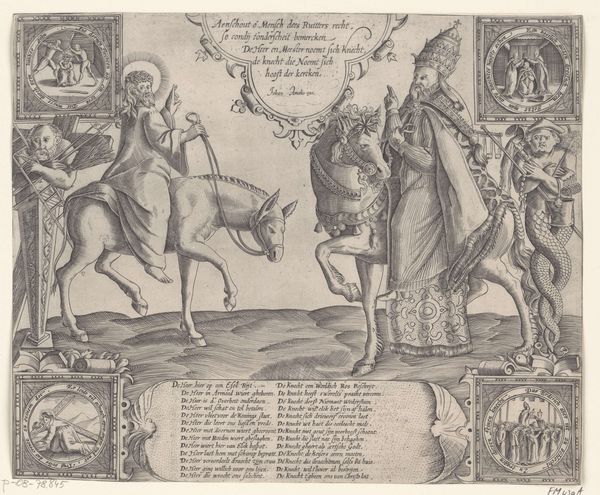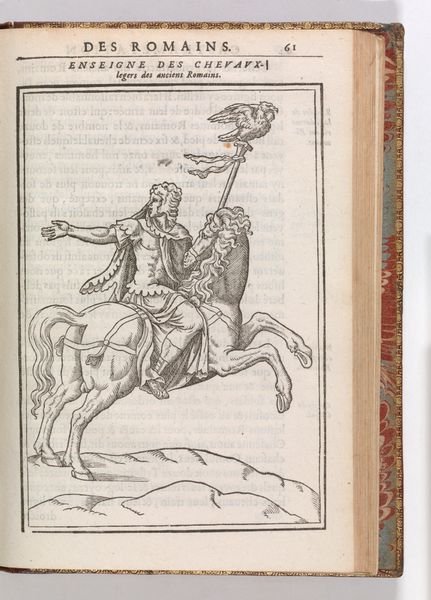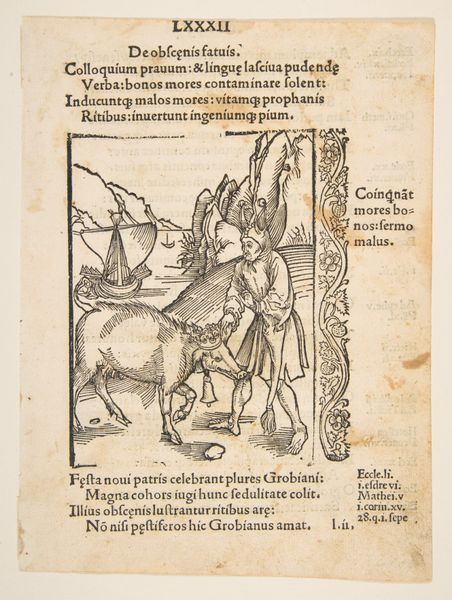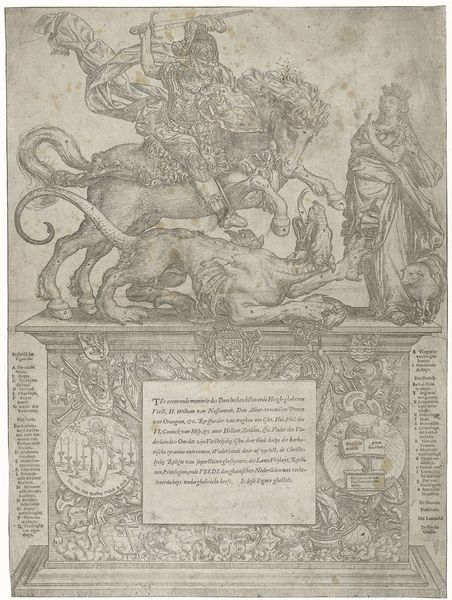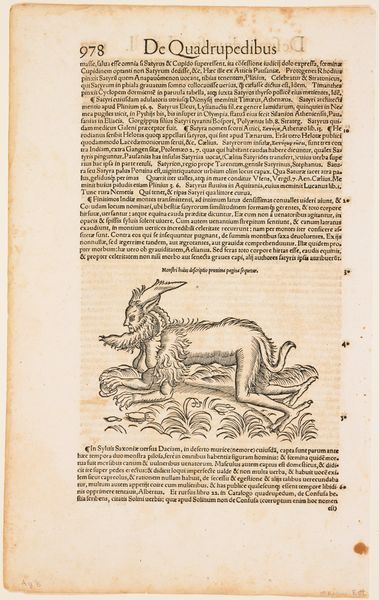
Large Triumphal Carriage of Maximilian I c. 1518 - 1522
0:00
0:00
print, woodcut
#
narrative-art
# print
#
figuration
#
geometric
#
woodcut
#
line
#
history-painting
#
italian-renaissance
Dimensions: 16 x 10 13/16 in. (40.64 x 27.46 cm) (sheet)
Copyright: Public Domain
This is a section of Albrecht Dürer's "Large Triumphal Carriage of Maximilian I", a woodcut from the early 16th century. It gives a sense of the political and cultural climate of the time, and how the Holy Roman Emperor Maximilian I used art as propaganda. Dürer and his workshop were commissioned to create an enormous print celebrating the emperor’s lineage and his military and political achievements. This particular section shows the virtues "Alacritas" and "Oportunitas", Latin terms for "Zeal" and "Opportunity", driving the carriage. By including them, the artist creates meaning through visual codes, cultural references, and historical associations, suggesting Maximilian's reign was guided by these virtues. To fully appreciate this piece, one might delve into primary source documents from the period, examining the social, economic, and political forces that shaped artistic production at the time, and to understand the public role of art and the politics of imagery in the 16th century.
Comments
minneapolisinstituteofart almost 2 years ago
⋮
Dürer's magnificent allegorical design for the Imperial chariot was originally commissioned in 1512 as the centerpiece of Maximilian's Triumphal Procession, one of the most ambitious projects in the history of the graphic arts. Dürer's elaborately embellished carriage was intended to form the climax of the entire procession, showering the Emperor in personal glory, while underscoring his dynastic power. The final fully elaborated drawing for the woodcut was completed only in 1518, and the woodcut remained unfinished at the time of the Emperor's death in 1519. In 1522, Dürer published the Triumphal Chariot himself as an independent woodcut dedicated to the Emperors Maximilian and Charles V. The print differs from the original design in the addition of printed text explaining the various symbolism of the work and a short history of its production. Dürer also omitted the Emperor's family from the composition, for after Maximilian's death it seemed fitting to interpret his "triumph," not as a dynastic manifesto but as a personal apotheosis.
Join the conversation
Join millions of artists and users on Artera today and experience the ultimate creative platform.
